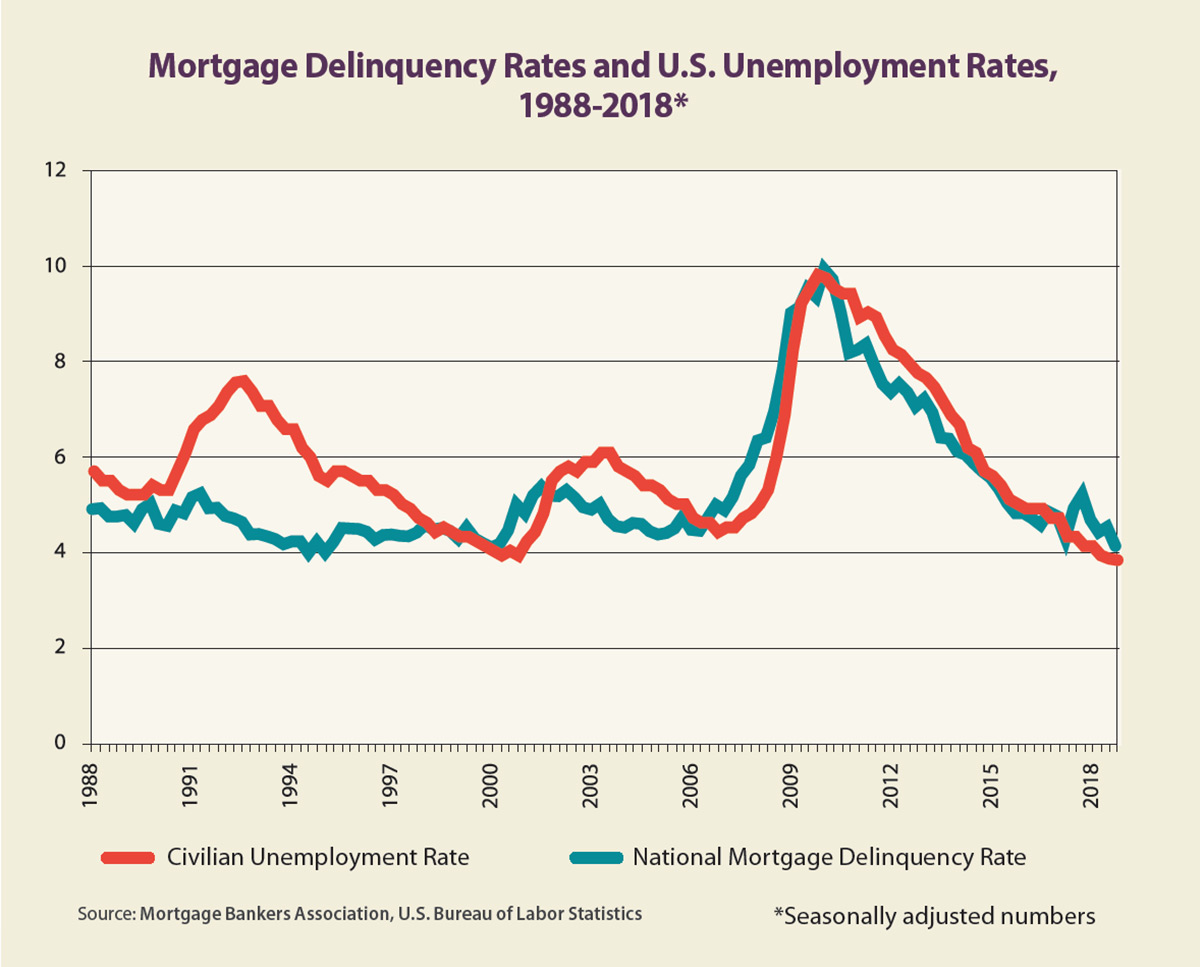A plethora of headwinds were thrown at the U.S. economy at the beginning of 2019, from stock-market volatility and a slowing global economy to the government shutdown and ongoing concerns of a trade war with China.
It’s safe to say that the year got off to a tumultuous start. Thankfully, conditions have started to improve. The stock market surged this past February, job growth remains robust, wages are rising and mortgage rates have recently inched downward — to levels not seen since early 2018.
These favorable factors are why the Mortgage Bankers Association continues to be guardedly optimistic about this year’s housing market. Along with lower borrowing costs, prospective buyers in some markets are now seeing more listings for sale, which is giving them more options and ultimately helping to cool home-price gains.
Our forecast calls for home-purchase originations to increase by 4 percent this year to $1.24 trillion but, ultimately, it will come down to how fast new and existing housing supplies can replace what’s being quickly sold. Particularly in the entry-level price range — where most first-time buyers are searching — supply is still not keeping pace with demand. If home prices start speeding up again, it will be because supply is falling behind. As a result, sales will suffer. The key in coming months will be if homebuilders can start significantly ramping up production in many of the supply-starved markets around the country.
With the retreat in mortgage rates that began in December of last year, refinance activity has picked up a bit, but not enough to noticeably impact our origination forecast. Even with the uptick in purchase originations, total originations are expected to be roughly flat, declining around 1 percent to $1.63 trillion.
For borrowers looking to apply for a mortgage, credit continues to be increasingly available. A historically strong job market and rising incomes help household purchasing power. Still, faced with higher home prices, lenders are making more conventional low-downpayment programs available to prospective borrowers, and more potential borrowers are applying for larger mortgages. Our jumbo mortgage index is expected to continue trending upward.
Despite last year’s natural disasters, including hurricanes in the South and wildfires in the West, nearly all households are making on-time mortgage payments. The overall national mortgage-delinquency rate this past fourth quarter was at its lowest level since first-quarter 2000. Even more notable, across all loan types and stages of delinquency, the rate during the last three months of 2018 was lower than that of the third quarter, as well as on a year-over-year basis. In other words, the solid economy is keeping mortgage delinquencies and foreclosure inventories at or near their lowest levels in nearly two decades.
It’s often said that economic expansions do not die of old age. That is true. As we saw late last year amidst the sudden drop in the stock market, however, there are more whispers that a recession is around the corner. Although global and domestic risks remain, we are forecasting that the U.S. economy will expand in the near future, albeit at a slower pace of 2 percent this year and 1.4 percent in 2020. The slower-growing economy will temper inflation and will likely keep the Federal Reserve patient, meaning it may take a more cautious approach in regards to future interest rate hikes. That is good news for borrowers and businesses seeking loans.
From rising origination costs and fewer refinancings to stiff competition for a smaller piece of the borrower pie, the mortgage industry will continue to face challenges this year. But a growing economy that continues to add jobs and boost pay is good news for the housing market. With the 30-year fixed-rate mortgage now expected to average around 4.8 percent for the year, and signs that housing supply will meaningfully rise, there are enough reasons to be guardedly optimistic that 2019 can be a solid year for the industry.
Author
-

Mike Fratantoni is chief economist and senior vice president of research and industry technology at the Mortgage Bankers Association (MBA). He is responsible for overseeing MBA’s industry surveys, benchmarking studies, economic and mortgage origination forecasts, industry-technology efforts, and policy-development research for the single-family and commercial/multifamily markets. Prior to joining MBA, Fratantoni worked in risk management and senior economist roles at Washington Mutual and Fannie Mae.
View all posts







